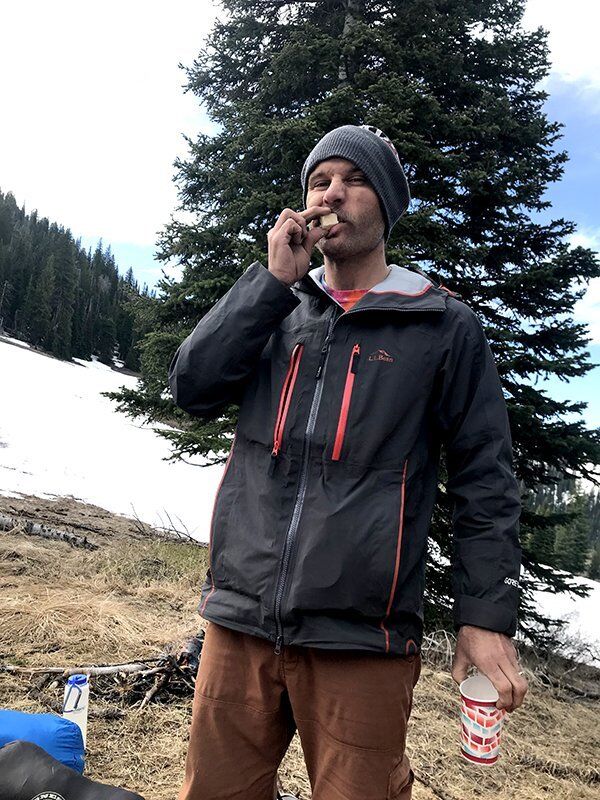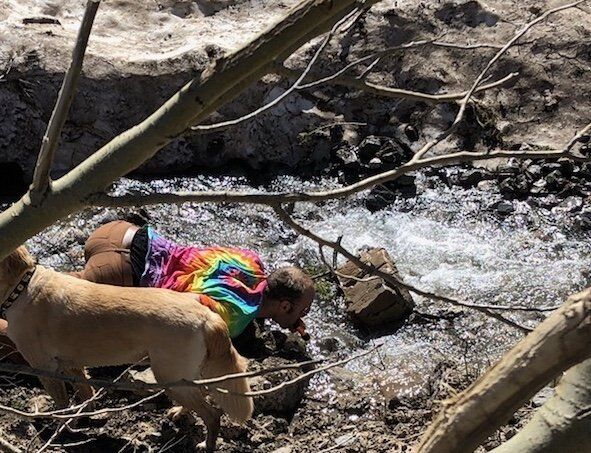Sustain Supply Co Essential 2 Survival Kit Backpack Review
For those who don’t spend tons of time thinking about disasters, they take care of all the planning. For those who do, they just collect everything into an efficient, affordable emergency kit you can stash and forget about until you need it. I recently decided to take my Sustain Supply Co Essential 2 kit for a spin, backpacking through the Tetons, and it delivered.
Sustain Survival Backpack Contents
Let’s start by doing an assessment of what, exactly, I was packing:
- Rations for 2 people for 72 hours
- 12 packets of water
- 1 Sawyer Mini water filtration straw/topper
- 4 Cyalume emergency snaplights
- 1 LED lantern
- 1 Morakniv Craft Knife
- 1 First Aid Kit
- 2 Emergency Blankets
- 1 pack of bath wipes
- 2 whistles
- A bundle of cordalette
This is the basics of what you’d need to survive, all packed into a backpack the size of something you’d take to class. You have food, water, the ability to make more water, light, a cutting tool, and something for basic medical and warmth needs. And cordalette which is probably the most underrated survival tool there is. I’ll obviously add a tent and sleeping bags but that’s more than you can expect out of a basic disaster preparedness kit.
And yeah, there are plenty of “kits” you could buy that turn out to be full of junk that won’t actually endure an emergency. How did Sustain’s kit fare?
The knife is sharp and strong for such a light blade. I used it to cut off small branches on our backpack to make a campfire and it didn’t dull; also used it to stir the water boiling for our dinner and cut clothing a pair of pants to make a strap. Bath wipes are always essential. But the real things I wanted to test were the rations and the water filter.
The rations taste like unsweetened shortbread. But they gave me enough energy to hike the 5 miles back through rugged terrain (with snow-crossings and bushwacking) with about a 70-pound pack. I took 2/3 the daily allowance over my morning hike so I’d point out one thing — the allowances will sustain you for the time they say if you’re mostly just trying to keep alive during a disaster or engaging in light-to-medium exertion; beyond that, you’d have to up your intake and so it’s probably a good idea to have some extra rations.
The other most important thing is the water filter. People have gone over a month without food. You got a couple of days to a week at best (and that’s with basically 0 exertions) before you die of dehydration. And while you might be able to eke out some drops of water almost anywhere, if you get a waterborne illness as is common in basically any inhabited part of the world, you’ll dehydrate even faster. I tested this on a creek in the mountains which, while certainly fresher than the Los Angeles River, has been dirtied by a winter of dogs and people using Teton Pass as a bathroom and the rampant foot traffic inherent in being one of the nation’s most-visited wilderness areas. As I lay on the ground to use the filter as a straw, I wondered if this was a good idea, testing a water filter without researching what (or how) it does. Then I drank deeply. Luckily for me, it passed with flying colors. Three weeks later and no giardia, lepto, or any other bacterial illnesses.
The illumination is great. The waters, while too heavy to pack if you’re hiking out of dodge, are great for temporary fillers until you can get to a water source (or while you’re scavenging your house before setting out). And everything else is pretty self-explanatory.
What can be Improved
This kit is awesome. For most people, this is better than any emergency kit you have and it’s perfect if you’re gonna set up in your spot and wait out a hurricane, an earthquake, whatever. But I have a few things I’m gonna augment in my kit and think Sustain should consider too.
First off, the water is heavy. Yeah, that’s great for a home kit but all the individual packaging for the water packets adds a lot of weight if you’re hitting the road. I’d drop those, pack a few Nalgenes, and depend on that water filter.
Also that first aid kit is a great start but you should have another first aid kit full of athletic tape and wrap and bandages and a Sam split or two. Don’t depend on this little first aid kit for more than some basic aches, pains, minor burns.
The other thing this could use — a fire-starting kit; that’s arguably more essential than about anything, other than maybe the water filter and the rations as it can provide warmth, can cook any scraps you might find (to hopefully kill parasites etc…) and even boil water if your filter stops working (or melt snow if you’re up north).
But as a core pack, this is unbeatable and certainly, the price makes it a fully-justifiable contingency plan.
Sustain Supply Co Essential 2 Survival Kit Backpack Pros & Cons
Pros:
- Compact and efficient emergency essentials
- Durable, sharp knife for various tasks
- Effective water filtration for clean drinking water
Cons:
- Heavy water packaging for on-the-go
- Basic first aid kit limitations
- Lacks fire-starting kit for emergencies
Overall Impression
Humans spend so much money on junk like furniture and ironic coffee mugs and silly T-shirts; we at Mountain Weekly obviously are all about everybody spending money on art and on gear for having fun but those won’t keep you alive in a tough spot. Here’s something that could mean the difference between life and death.
Sustain has put an essential superpack ($99) together to help form the core of your survival kit and, for plenty of people, this is a pretty perfect survival kit all on its own. No wonder they named it the “Essential”.
So get one of Sustain’s offerings, do an inventory, then put it in the hallway closet and hope you never have to use it. But know that if you do, it will work. I guarantee that’ll help you sleep better in an increasingly unpredictable world.





